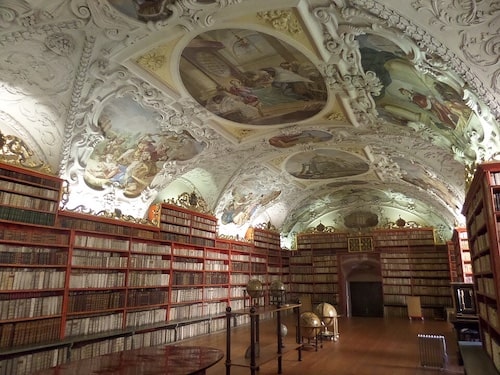After the fall of the Western Roman Empire, Christianity became one of the most important forces shaping European society. As Roman political structures collapsed, the Christian Church helped fill the gap, providing leadership, education, and unity. Religious leaders and communities played a major role in preserving knowledge, spreading beliefs, and organizing daily life.
Saint Patrick and the Spread of Christianity
One of the most well-known missionaries during this time was Saint Patrick, who helped spread Christianity to Ireland in the 400s CE. Born in Britain, Patrick was kidnapped and enslaved by Irish raiders. After escaping, he returned to Ireland as a missionary, working to convert people to Christianity. He used local traditions and symbols to explain Christian ideas, which helped gain support. His efforts helped make Christianity a major religion in Ireland and encouraged the growth of monasteries and churches there.
Saint Benedict and Monastic Life

In Italy, another religious leader, Saint Benedict, had a different kind of influence. Around 529 CE, he founded a monastery at Monte Cassino and created a set of rules to guide the daily lives of monks. These became known as the Rule of Saint Benedict. His guidelines focused on prayer, work, community living, and self-discipline. Benedict’s ideas shaped monastic life across Europe and became a model for Christian religious communities for centuries.
Benedictine monasteries followed a structured schedule and expected monks to devote themselves to study, agriculture, copying texts, and caring for the poor. This focus on both faith and learning helped preserve important texts and supported local communities.
Monasteries as Centers of Learning
Monasteries played a key role in keeping knowledge alive during a time when many schools and libraries from the Roman world had disappeared. Monks carefully copied religious and classical texts by hand, making sure important ideas from Christianity, Roman law, Greek philosophy, and science were not lost. These texts were stored in monastic libraries and passed down to future generations.
Some monasteries developed schools, teaching young boys—mostly from wealthy families—how to read, write, and study religious texts. These early forms of education helped preserve literacy and learning, even during periods of war and political instability. Monasteries also served as hospitals, farms, and shelters, offering services to the poor and sick.

The Church’s Growing Role
As Christianity spread, the Catholic Church became more organized. The Bishop of Rome, also called the pope, gained influence as a spiritual leader across Western Europe. Regional church leaders met in councils, like the Councils of Carthage, to make decisions about religious practices and teachings. This growing organization helped unite people across different regions through shared beliefs and church traditions.
Through its leaders, monasteries, and scholars, Christianity became a central part of European life. It shaped not only people’s beliefs but also how they learned, worked, and supported one another in daily life.
